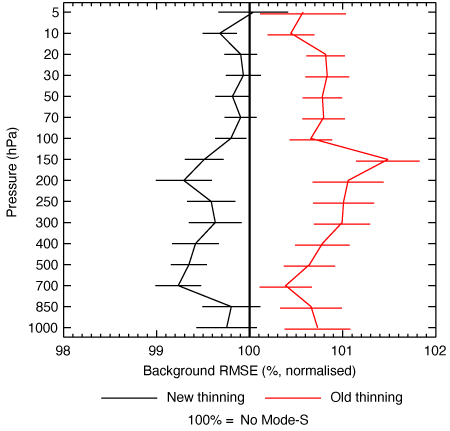ECMWF has started to use Mode-S aircraft observations again to improve the quality of forecasts. The use of Mode-S data was suspended in November 2022 when it became evident that the rapid increase in data volumes following the Covid-19 pandemic would require the development of mechanisms to control data density.
The aircraft observations of wind and temperature are used together with many other types of observations to estimate the state of the Earth system at the start of forecasts, known as the analysis. At ECMWF, aircraft reports are reportedly second only to satellite data in their impact on forecasts.
The aircraft reports come from different sources: in addition to data from the WMO’s Aircraft Meteorological Data Relay (AMDAR) program and a small number of other data, in July 2020 ECMWF started to assimilate Mode-S data over Europe.
Mode-S data is derived from air traffic control data. ECMWF points out that this data is not originally intended for meteorological use and needs to be processed to make it usable. For example, it includes the speed of the aircraft relative to the air. From that, with the positions of the aircraft a few minutes apart, the wind can be determined. That work is performed by the Royal Netherlands Meteorological Institute (KNMI). ECMWF uses the data that has been processed by KNMI.
Over Europe, about 100 times more data is available from Mode-S than from AMDAR. ECMWF used only about 5% of the Mode-S data in 2020. However, as data volumes increased after Covid-19 measures ended, the data assimilation system to process the observations was overburdened.
ECMWF’s 4D-Var data assimilation system starts from a previous short-term forecast and iterates to produce an analysis that is closer to the latest weather observations. It was found that the procedure did not produce optimal results for the large number of Mode-S observations used after Covid-19, in the limited time available. With a smaller number of Mode-S observations, on the other hand, the impact on forecasts became positive again. The new system was introduced in November 2023 after no Mode-S data had been used for 12 months. It includes a new method of thinning the data.
“In the previous system, individual aircraft tracks were considered and time thinning was applied to them,” said Bruce Ingleby, a scientist at ECMWF. “This led to too much data overall. The new system uses ‘box thinning’ – the atmosphere is divided into boxes, and just one aircraft report is used for each box.”
At short range, upper tropospheric winds over Europe are reportedly up to 8% better. ECMWF highlighted that the impact of using a smaller number of Mode-S observations, with a new thinning method, is particularly clear when compared with using no Mode-S data. This is shown below for temperature observations.

“This example shows the importance of constant vigilance when monitoring the global observing system. Not just the quality of observations but also data numbers are having an impact upon the analysis and forecasts,” Ingleby said. “In this case, there was nothing wrong with the observations, we were simply using too many of them.”
Thanks to the UK Met Office and KNMI, ECMWF will have access to global Mode-S data in the near future – a particularly exciting prospect is the availability of more wind data in the tropics.
To find out more about ECMWF’s latest developments, click here.



